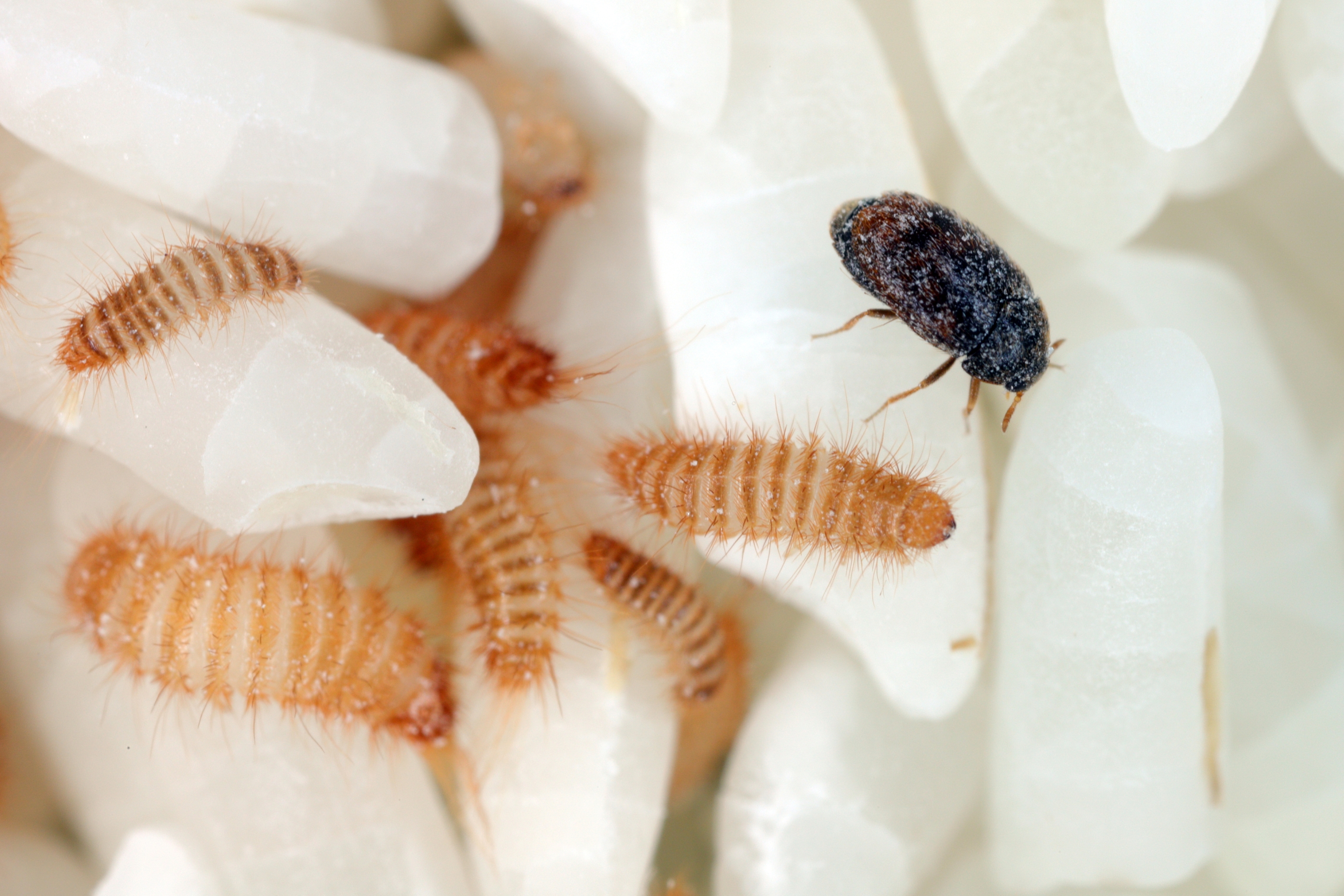
The tiny adult Khapra beetle (top) and juvenile larvae (bottom) pictured on grains of rice. Credit: Science and Surveillance Group, Department of Agriculture, Fisheries and Forestry
By Jim Moran, Victoria Grains Biosecurity Officer
Adapted from ‘Biosecurity Matters’ Department of Agriculture, Fisheries and Forestry (DAFF) e-newsletter Edition 2, 2022
Have you purchased a used sea container for your home, farm or business, even if it was years ago? If so, keep a vigilant eye out for khapra beetle (Trogoderma granarium) a beetle that can survive in sea containers for many years.
Due to its small size, fondness for cracks and crevices and ability to survive without food for extended periods, this hitchhiker pest can travel to Australia inside sea containers.
Khapra beetle is number two on Australia’s National Priority Plant Pest list and the number one pest for the grains industry. It is estimated that a widespread incursion could cost Australia $15.5 billion over a period of 20 years.
Pests are remarkable at adapting to new environments. When they become established, they can flourish in the absence of their usual natural predators and parasites that normally regulate their population.
Khapra beetle feeds on stored grain and dried food, destroying grain quality and contaminating the supply. Their skins and hairs can also cause breathing and stomach issues for people handling infested grains. Once infested, khapra beetle is extremely difficult to remove from storage structures and transport vessels.
This exotic pest, native to India, is not currently present in Australia and it is essential that we keep it that way. Khapra beetle has already spread to many parts of Africa, Asia, Europe and the Middle East.
Inspecting your container
When inspecting for khapra beetle, ensure you check the door seals, cracks, wall linings, and crevices, and particularly floors and floorboards of your sea container. Things to look out for include hairy larvae, shed larval skins, waste or damage to goods.
The Department of Agriculture, Fisheries and Forestry (DAFF) has produced a video on how to check a used sea container for khapra beetle. Watch it on Youtube.
How you can help
Farmers are urged to assist with important national efforts to monitor for khapra beetle in their grain storage and sea containers by installing dome traps.
Jim Moran, Victoria’s Grains Biosecurity Officer (GBO), said temporary dome traps can be useful to assist farmers with surveillance efforts.
“Surveillance will help assure our trade partners that we do not have khapra beetle. It will also raise the flag if we ever do find evidence of the pest, to immediately activate eradication efforts,” he said.
The small plastic dome traps sit alongside grain stores and sea containers and are inspected every 10 weeks and recharged with a small lure.
“If there is evidence of insects upon inspection, these will be sent to Agriculture Victoria’s entomologists for identification,” he said.
What to do if think you have found khapra beetle
If you find anything unusual in cargo, containers or parcels secure it immediately, and call the See. Secure. Report. hotline on 1800 798 636.
If you find anything on your property, call the Exotic Plant Pest Hotline on 1800 084 881 or report it via the DAFF website.
About the Grains Farm Biosecurity Program
Jim is part of the Grains Farm Biosecurity Program, an initiative to improve the management of, and preparedness for, biosecurity risks in the grains industry at farm and industry levels.
Launched in 2007, the program is managed by Plant Health Australia and funded by growers through Grain Producers Australia together with the New South Wales, Queensland, South Australian, Victorian and Western Australian governments. GBO’s in these five states develop and deliver materials to raise awareness and training to growers, consultants and other industry stakeholders.
For more information about grain pests and diseases and biosecurity practices, visit the Grains Farm Biosecurity website or contact your state’s GBO.
Other resources